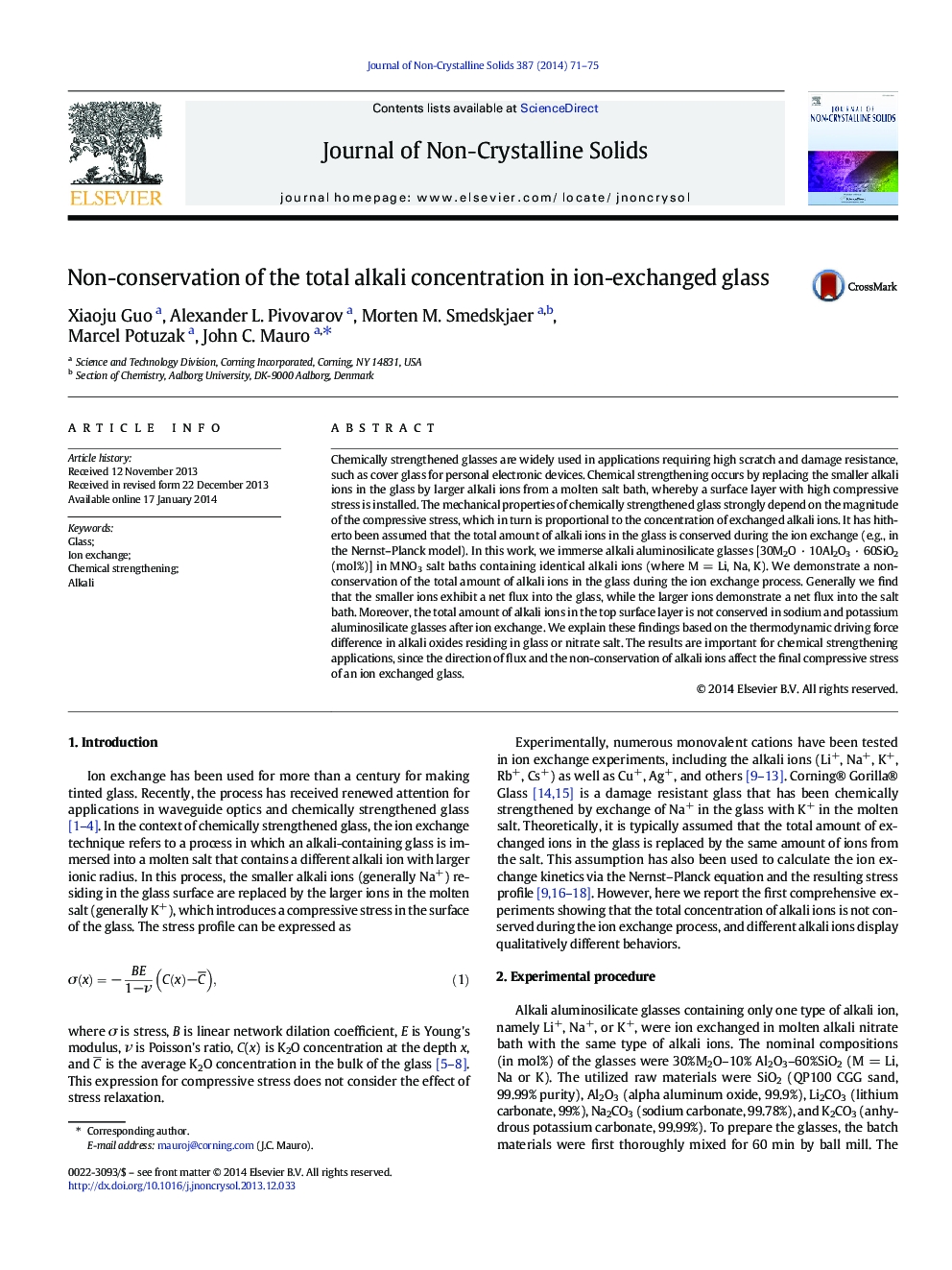| Article ID | Journal | Published Year | Pages | File Type |
|---|---|---|---|---|
| 7902366 | Journal of Non-Crystalline Solids | 2014 | 5 Pages |
Abstract
Chemically strengthened glasses are widely used in applications requiring high scratch and damage resistance, such as cover glass for personal electronic devices. Chemical strengthening occurs by replacing the smaller alkali ions in the glass by larger alkali ions from a molten salt bath, whereby a surface layer with high compressive stress is installed. The mechanical properties of chemically strengthened glass strongly depend on the magnitude of the compressive stress, which in turn is proportional to the concentration of exchanged alkali ions. It has hitherto been assumed that the total amount of alkali ions in the glass is conserved during the ion exchange (e.g., in the Nernst-Planck model). In this work, we immerse alkali aluminosilicate glasses [30M2O · 10Al2O3 · 60SiO2 (mol%)] in MNO3 salt baths containing identical alkali ions (where M = Li, Na, K). We demonstrate a non-conservation of the total amount of alkali ions in the glass during the ion exchange process. Generally we find that the smaller ions exhibit a net flux into the glass, while the larger ions demonstrate a net flux into the salt bath. Moreover, the total amount of alkali ions in the top surface layer is not conserved in sodium and potassium aluminosilicate glasses after ion exchange. We explain these findings based on the thermodynamic driving force difference in alkali oxides residing in glass or nitrate salt. The results are important for chemical strengthening applications, since the direction of flux and the non-conservation of alkali ions affect the final compressive stress of an ion exchanged glass.
Related Topics
Physical Sciences and Engineering
Materials Science
Ceramics and Composites
Authors
Xiaoju Guo, Alexander L. Pivovarov, Morten M. Smedskjaer, Marcel Potuzak, John C. Mauro,
